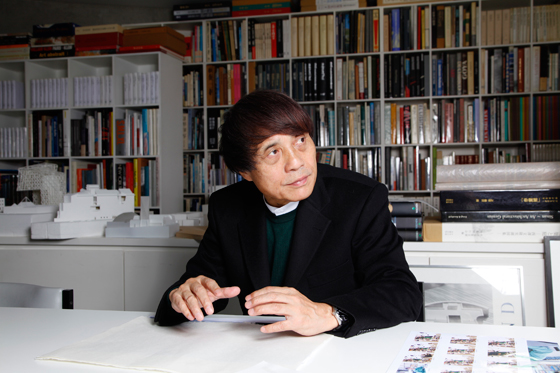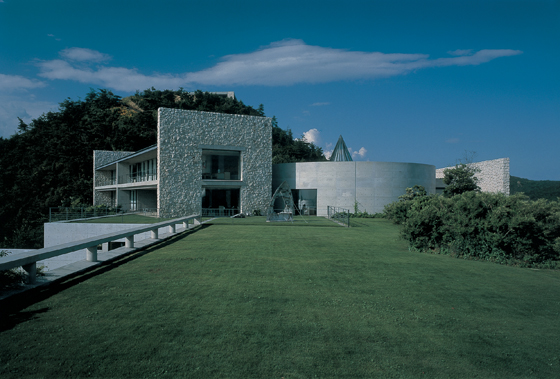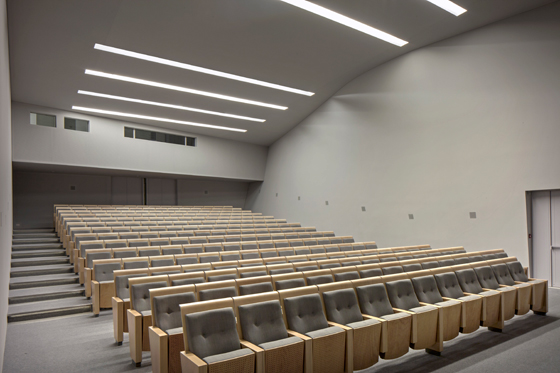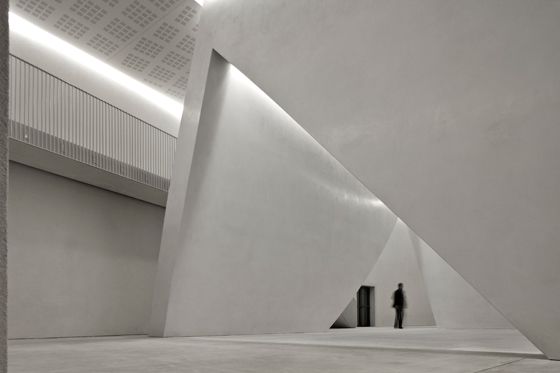Tadao Andō: Journey from the islands of Naoshima to Venice
Scritto da TLmag
Brussels, Belgio
25.02.14
Since establishing his design studio in 1969, Tadao Andō has surprised with raw concrete constructions and clean geometric forms, that have become symbols of his success. The Japanese architect has left his mark on the global landscape, from the Modern Art Museum of Fort Worth in Texas to the Armani Teatro in Milan, and Shanghai Opera House, scheduled for spring 2014. We chose Benesse Art Site Naoshima, the collective name for art activities conducted by Benesse Holdings, Inc. and Fukutake Foundation on the islands of Naoshima, Teshima and Inujima in the Seto Inland Sea in Japan, and the renovation of the Palazzo Grassi, that houses the François Pinault Foundation Collection in Venice, as the main theme for our exclusive interview in this special Asia edition of TLmag.
Palazzo Grassi Teatrino. Concrete and natural light, two elements that are omnipresent in the works of Tadao Ando; photo ORCH orsenigo chemollo
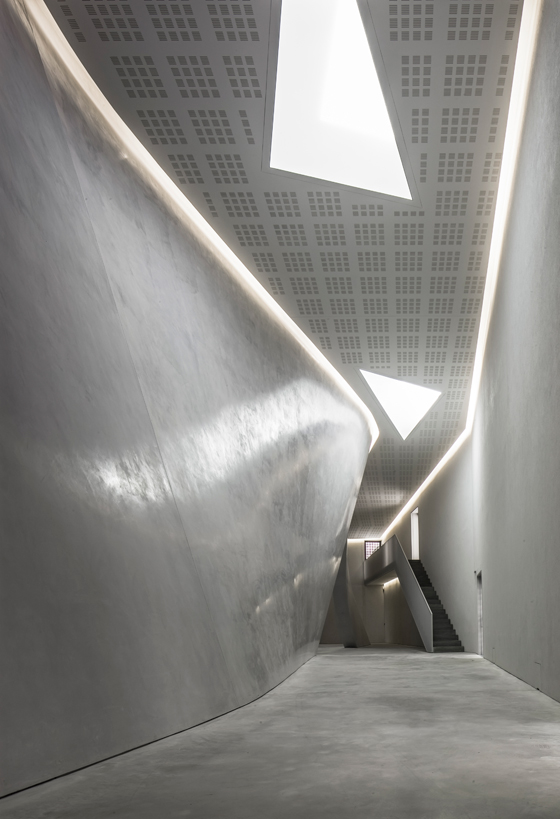
Palazzo Grassi Teatrino. Concrete and natural light, two elements that are omnipresent in the works of Tadao Ando; photo ORCH orsenigo chemollo
×Tlmag: Light seems to play an important role in your work. Is this influenced by the work of Le Corbusier who you discovered while training to become an architect?
Tadao Andō: I travelled for the first time in Europe in 1965 and I was really bowled over by Le Corbusier’s Chapelle de Notre Dame du Haut, in Ronchamp. Seeing these people gathered on the hill made me realise that architecture must offer a place where people can meet, share and live together. Inside the chapel, light flooded into the building from all sides. This has greatly influenced my approach to architecture. During that same trip, I visited the Pantheon in Rome and I discovered a different approach to space that we don’t have in Japanese culture. This new understanding of architecture empowered me. One thread of light falling from the ceiling… A very simple composition, but one that has been seducing men for centuries. I believe that light brings architecture to life. That’s why I always start by thinking about the light when I create an architectural space.
Tadao Andō in his office in Osaka; photo Shigeo Ogawa
TLmag: An example of this can be found on the island of Naoshima, where light is omnipresent, despite the underground buildings. How did you approach the project of transforming this island into an open-air arts centre?
T.A.: When I visited this place for the first time in 1988, with Soichiro Fukutake, the owner of Benesse Art Site Naoshima, he expressed a desire to transform Naoshima into an island that would be synonymous with art and culture, while protecting the Seto Inland Sea and the surrounding landscape. I hesitated because, in all honesty, at the time, the Seto Inland Sea was very polluted and Naoshima was a treeless, barren landscape. But Fukutake had so much faith in the project that I decided to come on board. Today, I am very proud of what we have achieved. I wanted to put the accent on nature, which is why I designed subterranean buildings in the middle of the forest.
With its underground architecture, the Chichu Art Museum preserves the landscape of Naoshima; photo Fujitsuka Mitsumasa
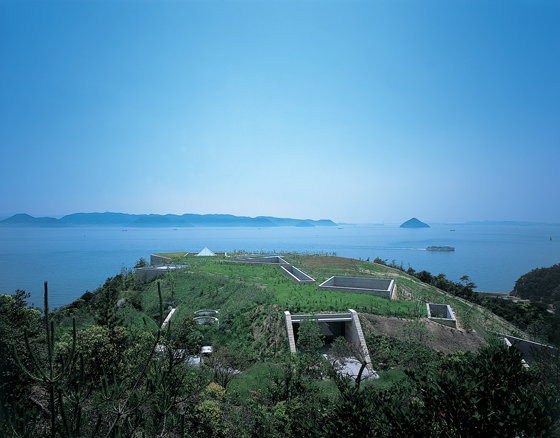
With its underground architecture, the Chichu Art Museum preserves the landscape of Naoshima; photo Fujitsuka Mitsumasa
×Benesse House, the first building by Tadao Andō at Naoshima, in 1992; photo Tadasu Yamamoto
TLmag: Were you guided by the same principles for the renovation of the Punta della Dogana, in Venice, which is now home to the François Pinault Foundation?
T.A.: The Punta della Dogana is a former customs house that dates back to the 15th century, so I took the history into account during the remodelling, playing off the existing style to preserve the Venetian views that men have enjoyed for centuries. These two projects - two islands surrounded by water - are very significant for me, because they pretty much sum up the idea of architecture that is rooted in the environment.
Punta della Dogana, a former Venetian customs house dating back to the 15th century, was remodelled whilst retaining its historical character; photo Tadasu Yamamoto
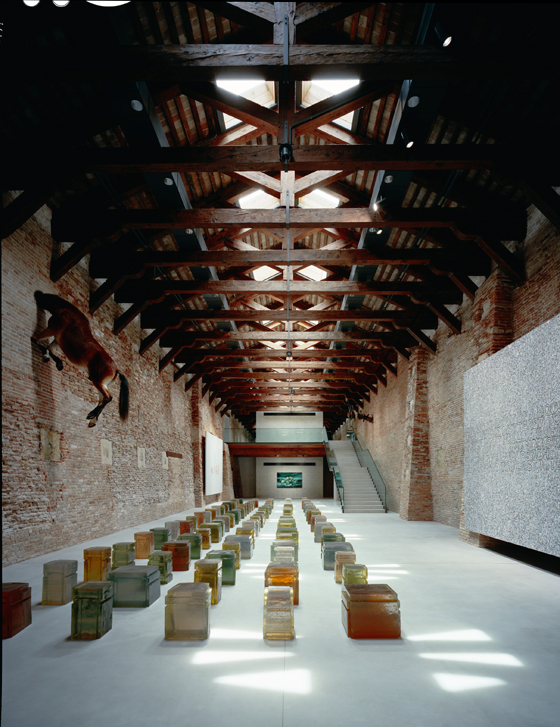
Punta della Dogana, a former Venetian customs house dating back to the 15th century, was remodelled whilst retaining its historical character; photo Tadasu Yamamoto
×TLmag: The Punta della Dogana opened the doors to other projects in Venice, such as the Teatrino. What obstacles did you come across while renovating this historic building?
T.A.: The Teatrino was initially conceived as a garden for the Palazzo Grassi. But in 1951, when it came to renovating it, they built a theatre that, at the time was seen as a temporary measure. That’s when people’s appreciation for it started to wane. But in Venice, it’s almost impossible to get approval if you want to demolish a building, so I had the idea of restoring the exterior wall and of introducing a concrete box that would contain an auditorium. It was a way of keeping the memory of the place alive while introducing a contemporary style of architecture into the heart of the building.
Punta della Dogana was a challenge for Tadao Andō who had to work with regulations governing a listed building; ; photo Shigeo Ogawa
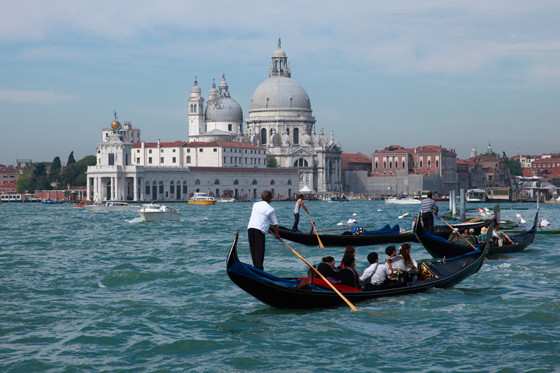
Punta della Dogana was a challenge for Tadao Andō who had to work with regulations governing a listed building; ; photo Shigeo Ogawa
×TLmag: You seem to enjoy a relationship of trust with François Pinault. You are both
self-taught, one in the ways of architecture, the other in the ways of art. Can you tell us about your working relationship?
T.A.: It was Karl Lagerfeld who introduced us to each other. François Pinault proposed that I work on a project for his vineyard, Château Latour, which didn’t come to fruition. Then my project for the Pinault Foundation on Île Seguin, an island in Paris, was chosen in an international competition, but the project had to stop for various reasons. However, we kept in touch and we finally came together at Palazzo Grassi and then Punta della Dogana. Two difficult projects that, in my opinion, have succeeded thanks to the hard work of the teams: and of François Pinault who very courageously orchestrated everything behind the scenes. Architecture should be a reflection of the times. My job mainly consists of designing a project by observing the world around me. I think that François Pinault subscribes to the same vision, and applies it his life and work.
Palazzo Grassi Teatrino: a concrete box inside the building was a means for Tadao Andō to preserve the memory of the place in the context of a contemporary architectural building;; photo ORCH orsenigo chemollo

Palazzo Grassi Teatrino: a concrete box inside the building was a means for Tadao Andō to preserve the memory of the place in the context of a contemporary architectural building;; photo ORCH orsenigo chemollo
×---
Info :


